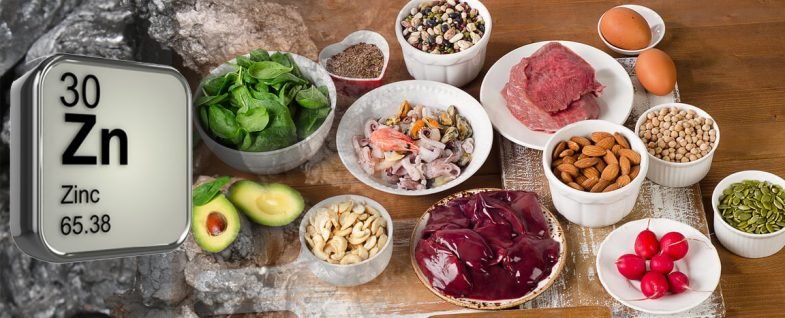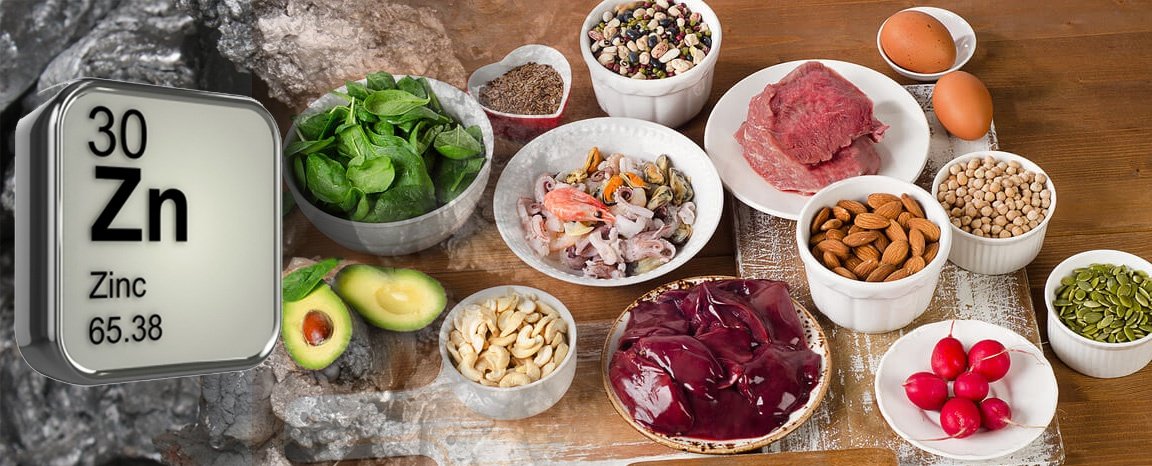Zinc supplementation as an essential nutrient for human was announced in 1961 when dwarfism, anemia and hypogonadism was described in a 21year old Iranian farmer who was surviving on unvaried diet of milk, unrefined flat bread and potatoes. Soon after, in Egyptian adolescents, similar complications was noticed who was also surviving on similar type of diet like Iranian farmer, mainly eating beans and bread.

Trace minerals malnutrition is a momentous issue of developed and developing countries. Among various trace minerals, Deficiency of zinc is the most extensive trace minerals deficit problem. Zinc is a crucial micronutrient, deficient among pre-school children and women, which eventually results in hidden hunger. Globally, people suffering from iron and zinc deficiencies are more than three billion. In Pakistan, 37% of population is facing the issue of zinc malnutrition. In human body, second most important micronutrient is zinc after iron. Zinc deficiency is the fifth leading cause of death and disease.
Zinc malnutrition is very extensive in areas where population is strongly dependent on an unvaried diet of cereal based foods, in which iron and zinc are stored almost exclusively in the husk, and are, therefore, lost during milling and polishing. Zinc contributes in the basic roles of cellular functions in all livings and is involved in boosting the human immune system. Zinc acts as a catalytic or structural component in various body enzymes. It is estimated that about 10% of all the proteins in the human body, are Zn-dependent. The distribution of zinc in the human body is as 30% in bones, 60% in muscles and 10% in hair, skin, plasma.
Zinc is a component of SOD (super oxide dismutase) enzyme, so it acts as an antioxidant. Zinc enhances the level of sexual hormone (testosterone) in men. zinc is also important for the production of two hormones (estrogen and progesterone) in women. Zinc is crucial for breaking down of carbohydrates and proteins present in food so it helps to increase the absorption of nutrients. Zinc plays role in healing wounds and restoring damaged tissues. zinc may help to prevent and heal diaper rash. zinc protects human’s skin from harmful sun’s UV rays.
Due to deficiency of zinc; the human body will suffer from hair and memory loss, skin complications and leaning of body muscles. Zinc deficiency leads toward mental fatigue, anorexia, diarrhea, pneumonia and malaria. During pregnancy, insufficient intake of zinc also causes hampered brain development of the fetus. In zinc deficient men, infertility has also been observed. Zinc deficiency also causes congenital diseases.
Absorption of zinc takes place in the small intestine. The amount of zinc absorbed in the small intestine is hard to determine because it is also excreted into the gut. Usually, in humans the average zinc absorption is 33% but latest researches have shown different absorption rates of zinc for different people depending on phytate and their diet. Absorption of zinc enhances with enhancing zinc in the diet but up to a maximal rate. During digestion, zinc is discharged as free ions from food.
In developing countries like Pakistan, the majority of people rely on unvaried cereal-based foods because of poverty, inflation and cultural values. Zinc is mainly stored in the aleurone layer and embryo portion of wheat grain. Concentration of zinc in the endosperm (white flour) is very low. White flour contains around 10 mg zinc per kg and the aleurone layer plus embryo may contain over 100 mg zinc per kg. Wheat grain is often used as food after milling, which eliminates the zinc rich portion and leaves only the zinc poor white flour behind. White wheat flour usually contains about 5–10 mg zinc per kg only which ultimately results in zinc malnutrition. Wheat grain also contains compounds which reduce the bioavailability and intestinal absorption of zinc such as phytate and phenolics.
According to recommendations, an average male requires 11 mg of zinc daily and an average female requires 9 mg of zinc. Pregnant and lactating female needs 13-14 mg of zinc daily. Infants from 7 months to 3 years require 3 mg, children from 4-8 years require 5 mg and children from 9-13 years require 8 mg of Zinc daily.
There are various approaches to tackle the micronutrient deficiencies that include diversification of diet, supplementation, food fortification and enrichment. According to recommendation, salt supplying easily bioavailable zinc sulphate, zinc acetate or zinc gluconate are used as a supplement. There are various compound of zinc that are accessible for fortification of food but zinc oxide and zinc sulphate are least costly and most frequently used by the food industry. For the fortification of flour, recommended rates are 30-70 mg zinc/kg.
Zinc malnutrition can be reduced by consuming whole wheat flour (white wheat flour + aleurone + embryo) and brown rice (polished rice + aleurone). The foods high in zinc are chicken, beef, pork, spinach, mushrooms, asparagus, lamb, pumpkin seeds, sesame seeds, garbanzo beans, cashews, lentils, quinoa, tofu, turkey, green peas, beet greens, oats, summer squash, broccoli, Brussels sprouts, miso, parsley, tomatoes, sea vegetables, bok choy, nuts like roasted peanuts, almonds, walnuts, and dairy products like yogurt, cheese and milk.
The authors are form University of Agriculture, Faisalabad.
